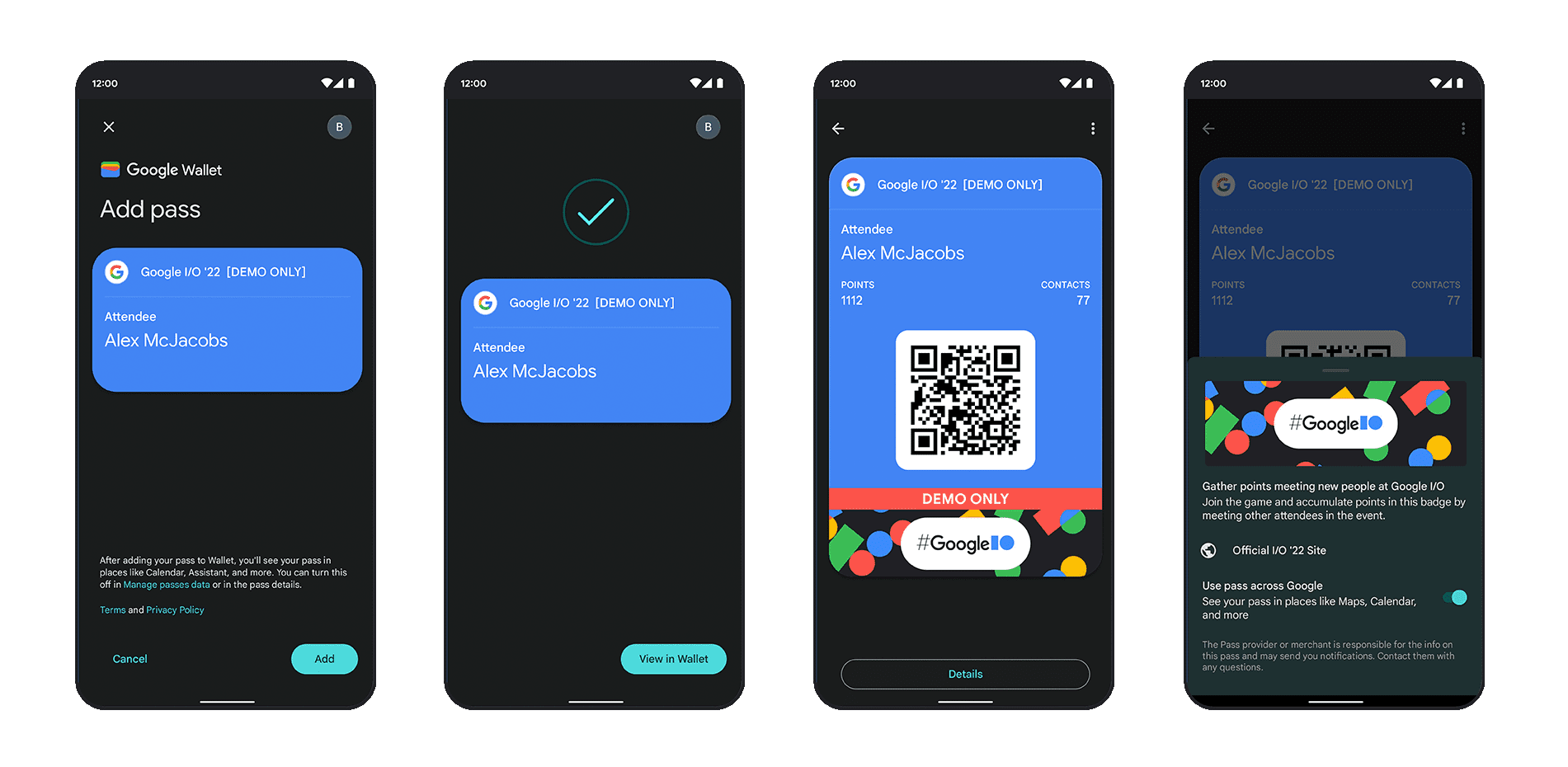May 11, 2022

Posted by Petra Cross, Engineer, Google Wallet and Jose Ugia, Google Developer Relations Engineer
Today more than ever, consumers expect to be able to digitize their physical wallet, from payments and loyalty to tickets and IDs. At Google I/O we announced Google Wallet, which allows users to do exactly that. Consumers can securely store and manage their payment and loyalty cards, board a flight, access a gym and much more, all with just their Android phone.
{ "id": "ISSUER_ID.OBJECT_ID", "classId": "CLASS_ID", "genericType": "GENERIC_TYPE_UNSPECIFIED", "cardTitle": { "defaultValue": { "language": "en", "value": "Your Program Name" } }, "header": { "defaultValue": { "language": "en", "value": "Alex McJacobs" } } } |
|
private val addToGoogleWalletRequestCode = 1000 private val walletClient: PayClient = Pay.getClient(application) private val jwtString = "" // Fetch a previously created JWT with pass data walletClient.savePassesJwt(jwtString, this, addToGoogleWalletRequestCode) |
Once your app calls savePassesJwt, the process guides your users through the flow of adding a pass to Google Wallet, and allows them to preview the pass before confirming the save operation.
 Developer documentation, samples and codelabs
Developer documentation, samples and codelabsWe’re really excited to build a great digital wallet experience with you, and can’t wait to see how you use the Google Wallet API to enrich your customer experience. Take a look at our hands-on workshop "Digitize any wallet object with the Google Wallet API" to see a full integration tutorial on Android.
- To get started with Google Wallet API on Android, see our developer documentation and step-by-step codelab.
- To start with your integration, create an issuer account through Google Pay & Wallet Console and register your Android application to use the API.
- Follow @GooglePayDevs on Twitter for future updates. If you have questions, tag @GooglePayDevs and include #AskGooglePayDevs in your tweets.